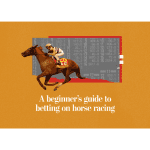Betting Terminology
For those new to the world of betting, understanding the terminology used can be a bit overwhelming. One common term you might come across is “point spread,” which is used in sports betting to even the playing field between two teams. Another term to be familiar with is “moneyline,” which indicates the odds of a team winning a game outright.
Additionally, “parlay” is a type of bet where you combine two or more selections into one wager for a higher payout if all selections win. “Over/under” refers to predicting whether the total points scored in a game will be above or below a certain number set by the oddsmakers. These are just a few key terms to grasp before diving into the world of betting.
Types of Betting
When it comes to betting, there are various types that cater to different preferences and strategies. One common type is straight bets, where you place a wager on a single outcome, such as picking the winner of a football game. This straightforward approach is popular among beginners and seasoned bettors alike due to its simplicity.
Another popular type of betting is parlays, which involve combining multiple selections into a single wager. While the potential payouts for parlays can be enticing, they also come with higher risk as all selections must win for the bet to be successful. This type of bet allows bettors to amplify their winnings by correctly predicting the outcomes of several events simultaneously.
Popular Sports for Betting
Football, also known as soccer in some regions, stands out as one of the most popular sports for betting around the world. With its wide reach and fan base, football offers a plethora of betting opportunities, from match winners to goal scorers and everything in between. The excitement and unpredictability of the sport make it a favorite choice for both seasoned bettors and newcomers alike.
Another top contender in the realm of sports betting is basketball. With its fast-paced nature and high-scoring games, basketball provides ample opportunities for placing various types of bets. From point spreads to player performance bets, basketball enthusiasts can analyze a wide range of factors to make informed betting decisions.
Factors to Consider Before Placing a Bet
Before placing a bet, it is essential to conduct thorough research on the event or game you are interested in. Understanding the dynamics, history, and current form of the teams or participants involved can greatly influence the outcome of your bet. Take into account various factors such as injuries, team strategies, weather conditions, and overall team performance before making your decision.
Another crucial aspect to consider before placing a bet is setting a budget and sticking to it. It is important to only wager an amount that you are comfortable losing and can afford. Resist the temptation of chasing losses or increasing your bets in the hope of winning back what you have lost. Developing a disciplined approach to betting can help you enjoy the experience without putting yourself at financial risk.
Understanding Odds
Odds are numerical representations of the likelihood of a particular outcome in a betting situation. They indicate the probability of an event happening and help bettors understand the potential return on their wager. In sports betting, odds can be expressed in different formats such as decimal, fractional, or moneyline, each conveying the probability of a specific outcome.
For decimal odds, the number represents the potential total payout, including the original stake. For example, if the odds are 1.80, a $10 bet would return $18 ($8 profit plus the original $10 stake). Fractional odds, on the other hand, display the potential profit relative to the stake. For moneyline odds, positive and negative numbers indicate the underdog and favorite, respectively. Positive odds show the potential profit on a $100 bet, while negative odds represent how much you need to bet to win $100. Understanding odds is crucial for making informed betting decisions and maximizing potential returns.















